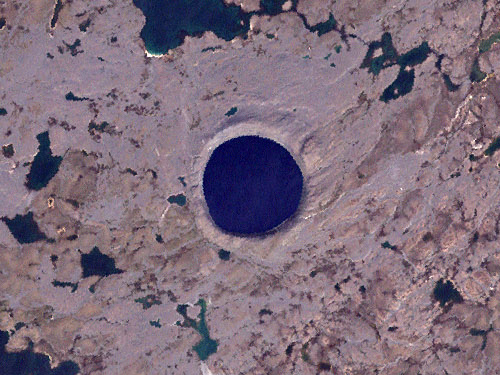Image: Pingualuit Crater
Description: NASA's Landsat 7 satellite captured this image of Pingualuit crater in Canada on August 17, 2002. In this image, water appears blue, and land appears in varying shades of beige. The high latitude of the area limits vegetation, so thick, lush forests do not flourish in this region. The crater’s name derives from an Inuktitut term meaning pimples evoking the hills landform of the surrounding area. Local Inuit also knew it as the Crystal Eye of Nunavik because of its circular form and its clear water. With a diameter of 3.44 kilometers (2.14 miles), Pingualuit Crater holds a lake about 267 meters (876 feet) deep. Because this lake has no connection to any other water body, inflows from other lakes cannot contaminate Pingualuit’s sediments. Beyond that, the sediments in this crater lake escaped being scoured away by glaciers during the Pleistocene Ice Age. So while sediment deposits in other water bodies in the area do not extend farther back in time than the last ice age, deep sediments in Pingualuit Crater preserve a longer record.
Title: Pingualuit Crater
Credit: http://earthobservatory.nasa.gov/IOTD/view.php?id=8472 (direct link)
Author: NASA/Jesse Allen/University of Maryland Global Land Cover Facility
Usage Terms: Public domain
License: Public domain
Attribution Required?: No
Image usage
The following page links to this image:


